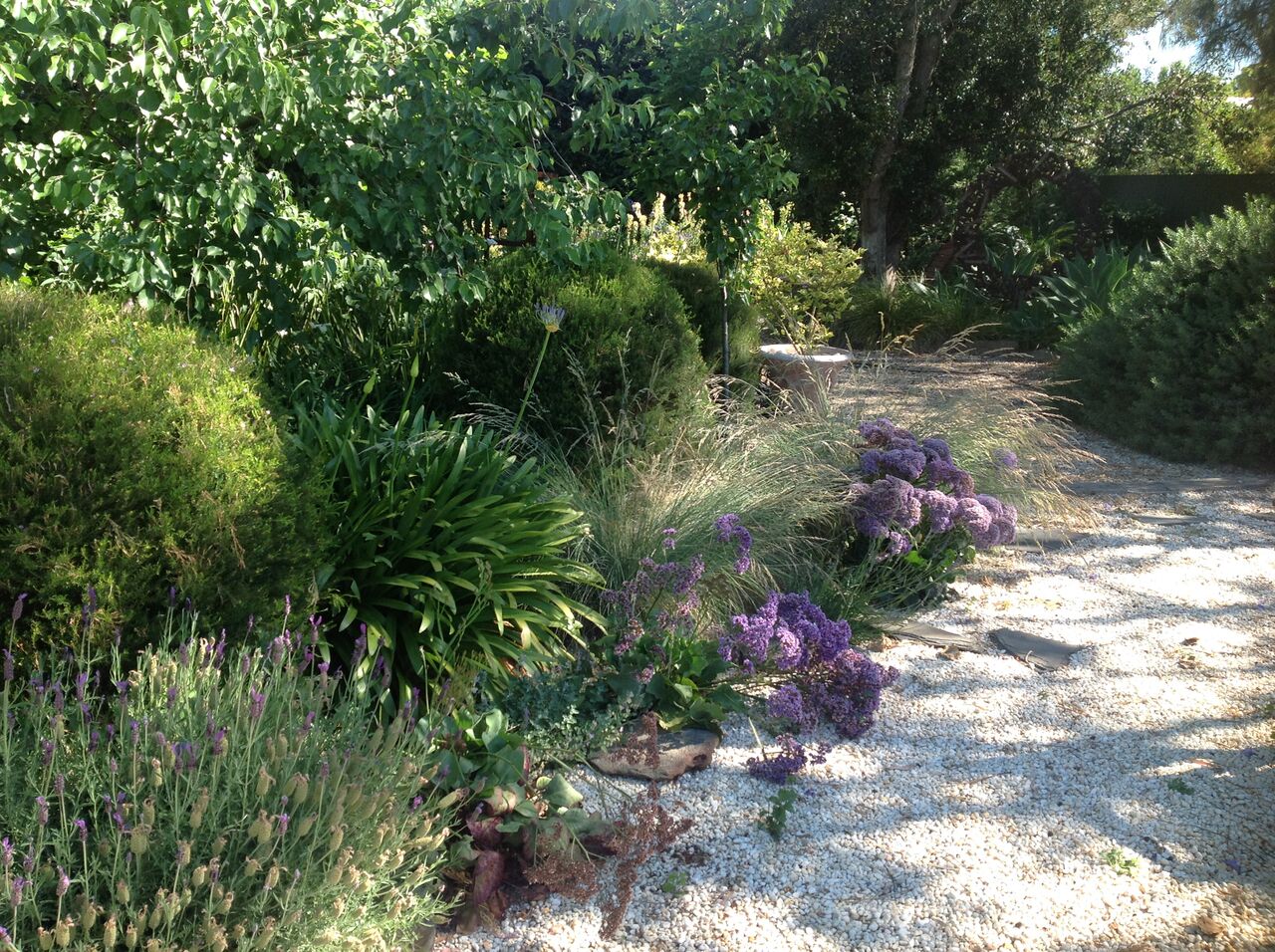WHAT IS MEDITERRANEAN GARDENING?
The Mediterranean climate is characterised by hot dry summers and cool winters with unpredictable amount of rain. Spring tends to be short and autumn more prolonged. These factors are common to the five Mediterranean climate regions of the world: the Mediterranean basin itself, South Africa’s Cape, central and southern California, central Chile and south and southwestern Australia. While rainfall can vary between 1000mm and 250mm a year, these five regions are all located between 30 and 45 degrees latitude in the northern hemisphere and 30 to 40 degrees latitude in the southern hemisphere.
The Mediterranean climate is a mixed blessing – warm and sunny yet with uncertain winter rain. If we use plants from the Mediterranean regions of the world that are supremely adapted to these conditions then we can reduce the need for wasteful irrigation and create beautiful gardens.
Drought tolerant plants will grow on winter rain and become dormant in the heat of the summer but will survive. Planting in early autumn will give them a good start and although they may need some supplementary watering in the first summer and mulching to retain water in the soil, they should be doing well by their second year.
The best plants to survive hot summers have developed physical strategies to adapt: felted, thick or glossy leaves for example. Others store water in their stems and reduce their surface area to cope with summer heat stress, expanding their leaves again when the autumn rains arrive.
Planning is important in Mediterranean gardening – grouping plants with common watering needs. You may choose to locate plants needing more water close to the house but allow the rest of the garden to survive on available rainfall.
Improving soil structure and taking care to encourage soil microbes will all contribute to a good root structure and tough long lasting plants that will stay the distance
Good planting plans will ignore the fleeting attraction of flowers and concentrate on large plants which will form the backbone of the garden and are likely to be evergreen. Other strategies include creating shade by planting trees or using man made structure like pergolas to reduce heat stress.
Mediterranean gardening advocates like French nurseryman Olivier Filippi advocate using alternatives to lawns: paves areas, terracing and low water use plants instead of grasses.
Another important element is taking care of your soil so that plants are healthy and therefore more resilient to drought conditions. Improving soil structure and taking care to encourage soil microbes will all contribute to a good root structure and tough long lasting plants that will stay the distance.
resources
If you would like to learn more about Mediterranean Gardening, here are some titles we suggest:
Gardens of the Sun, Plants for Mediterranean Climate Gardens and Plants for a Changing Climate – written by former SAMGS branch head Trevor Nottle
Australian Gardens for a Climate - by Jenna Reed Burns, Lantern, an imprint of Penguin Books
Good Gardens with Less Water - by Kevin Handreck, CSIRO Publishing Gardening Guides
The Mediterranean Gardener - by Hugo Latymer; published by Frances Lincoln in association with the Royal Botanic Garden, Kew
Mediterranean Gardening: A Waterwise Approach - by Heidi Gildemeister
Mediterranean Gardens: A Model for Good Living - by Louisa Jones, Bloomings Books
The Dry Gardening Handbook: Plants and Practices for a Changing Climate - by Olivier Filippi, Thames and Hudson



















